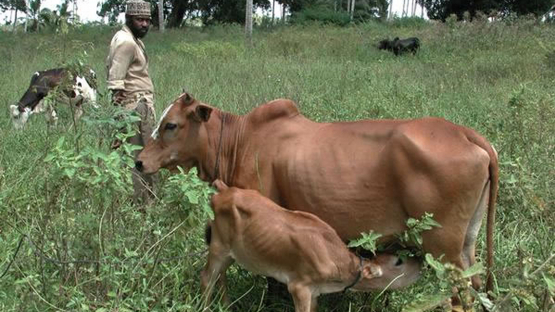Fighting the tsetse fly using irradiation involves rearing and then releasing in the environment sterile male flies to mate with wild females producing no offspring, reducing the population over time. But sorting thousands of male flies from females every week, which is done by hand, is a tedious process. A new technique and machine – developed by the IAEA in cooperation with the Food and Agriculture Organization of the United Nations (FAO) – with an infrared, high-speed camera is helping to speed up the sorting.
The tsetse is a bloodsucking insect found in sub-Saharan Africa which transmits a parasite that can be fatal to both animals and humans. Their sorting is crucial so that only males can be sterilized, while colony females, who only produce between six and ten offspring in their lifetime, stay in the laboratory to maintain the tsetse colony needed for the sterile insect technique (SIT) programme.
Technicians at the FAO/IAEA Insect Pest Control Laboratory (IPCL) in Seibersdorf, Austria, sort up to 7700 tsetse per week for use in SIT projects. With this new technology streamlining the sorting process, more tsetse can be sorted leading to improved disease control. Moreover, the ability to sort tsetse earlier, at their pupae state, allows for healthier sterile male tsetse to be sent to field programmes in sub-Saharan Africa as pupae are less fragile than adults.
“Sorting the insects manually is very time consuming and accounts for up to one-third of the work that we do in the insectary,” said Andrew Parker, who recently retired as the leader of the livestock pest (LP) research group at the IPCL. “Many attempts were made throughout the years to identify the sex of the tsetse pupae. We looked at differences in shape, density and weight loss, among many other factors before this new technique was developed.”
When the tsetse is a pupa – the stage before the fly becomes an adult – males and females look alike, so tsetse flies had to be separated as adults. “The previous sorting process of the tsetse was time consuming; we would manually screen the adult tsetse flies after making the fly immobile through cooling,” said Chantel de Beer, a research entomologist and the leader of the LP research group at the IPCL. “Through this new sorting technique, we can distinguish between male and female tsetse flies earlier, meaning that the flies can be transported in the pupal stage. This allows for the safer and more streamlined transport of tsetse to FAO/IAEA field programmes using the SIT.”







